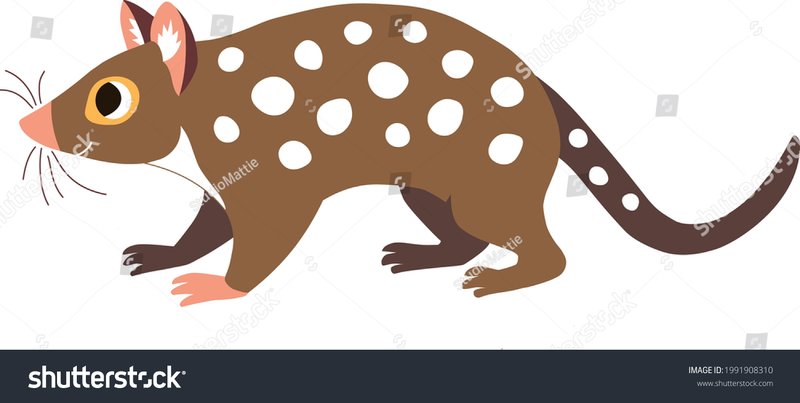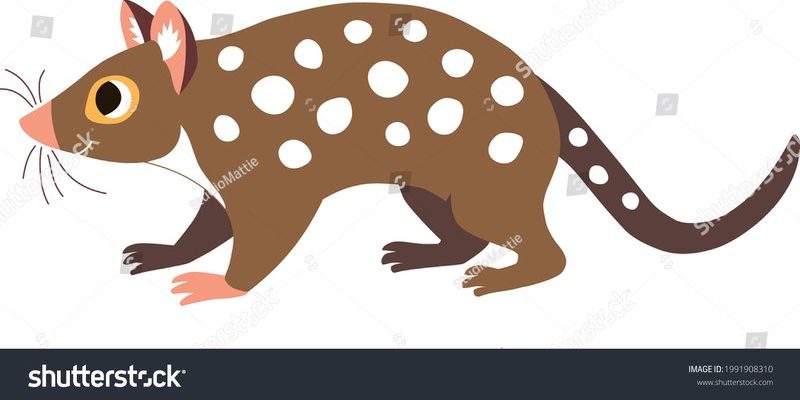
But you might be wondering, what makes the quoll so significant in culture? To many Indigenous Australians, the quoll isn’t just another creature; it represents stories, morals, and teachings passed down through generations. From its role in Aboriginal storytelling to its appearances in modern art, this critter is much more than just a curious animal—it’s a symbol that resonates deeply with various cultures. Let’s embark on a journey through the world of folklore and cultural significance to uncover how the quoll is represented.
The Quoll in Aboriginal Mythology
Aboriginal cultures have a rich tapestry of stories, and the quoll often features prominently in these narratives. In many stories, the quoll represents a trickster, much like the coyote in Native American tales. For instance, one story describes how a quoll outsmarts larger animals, teaching a lesson about wit and intelligence over brute strength. Imagine a small yet clever character cleverly maneuvering through challenges, showcasing how sometimes the underdog can outshine the giants.
Moreover, the quoll’s nocturnal nature plays a role in its representation. Since it’s primarily active at night, it’s often associated with mystery and the unknown. In some tales, the quoll is seen as a guide through dark times, helping other animals find their way when lost. This connection to the night is important because, just like in human stories where the night can be scary but also beautiful, the quoll embodies both aspects.
As you can see, the quoll isn’t just a character in a story. It acts as a vessel for deeper meanings and teachings that resonate within Aboriginal communities.
The Quoll in Modern Australian Culture
Fast forward to today, and the quoll still captures the imagination of many Australians. In recent years, there’s been a growing interest in wildlife conservation, and the quoll has become a symbol of these efforts. You might find it popping up in conversations about biodiversity and the importance of protecting native species. In a way, the quoll now serves as a living reminder of ecological balance and the need for preservation.
In arts and entertainment, the quoll has made its mark as well. From children’s books to documentaries, this little marsupial is often celebrated for its quirky characteristics. Imagine kids laughing and learning about this unusual animal through colorful illustrations and engaging stories. It’s a fantastic way to teach the next generation about wildlife and conservation, all while inspiring a sense of wonder.
Even in art, you might see the quoll represented in various forms, from paintings to sculptures. Artists often capture its playful spirit, using vibrant colors to mirror its spots and lively personality. This creative representation helps foster a connection between Australians and their unique wildlife.
Folkloric Symbolism of the Quoll
Interestingly, the quoll isn’t just a character in stories; it embodies valuable symbolism in various cultures. For example, in some Indigenous Australian traditions, the quoll represents balance in nature. Its presence often indicates a healthy ecosystem, reminding us that each creature plays a role in the larger web of life. Imagine a tapestry where each thread is essential to the overall picture—without the quoll, that picture would be incomplete.
Additionally, the quoll can symbolize resourcefulness and resilience. In folklore, it often faces challenges yet manages to adapt and thrive. This idea resonates with many people, especially in times of hardship. It serves as a powerful reminder that cleverness and adaptability can lead us through difficult situations.
Moreover, as folklore evolves, the quoll continues to find new meanings in modern contexts. As environmental concerns grow, it emerges as a symbol of sustainability and respect for the environment. This connection to contemporary issues keeps the quoll relevant, ensuring its stories endure for future generations.
The Quoll in Literature and Media
The quoll’s cultural significance extends beyond traditional folklore into literature and media. Various authors have included the quoll in their works, often portraying it as a symbol of wit or survival. Think of children’s books that feature a clever quoll outsmarting predators or navigating tricky situations. These stories not only entertain but also educate young readers about the importance of creativity and resilience.
In movies and documentaries, quolls often appear as charismatic characters that showcase the beauty of Australian wildlife. Viewers might find themselves captivated by their playful antics and unique traits. This representation fosters an appreciation for biodiversity and emphasizes the need for conservation.
Additionally, social media has played an essential role in amplifying the quoll’s presence. From adorable videos to educational posts, platforms like Instagram and TikTok offer a fun way to engage with wildlife. You might stumble across a post showcasing a quoll, complete with a catchy caption highlighting its quirky behavior. Such content helps spread awareness and spark interest in the species among a wider audience.
The Quoll’s Impact on Conservation Efforts
As interest in the quoll grows, so does the focus on its conservation. This small marsupial has become an emblem of the challenges facing many native species in Australia. Efforts to protect the quoll are often tied to broader initiatives aimed at preserving habitats and promoting biodiversity. You might be surprised to learn that every little effort counts—whether it’s local clean-up days or larger, government-backed conservation programs.
Community involvement plays a crucial role in these efforts. Many people volunteer to participate in quoll tracking and monitoring programs, helping to gather data on their populations. This hands-on approach fosters a sense of ownership toward the environment and wildlife. Imagine being part of a community project that contributes to the survival of a species. It’s empowering!
Moreover, education is key when it comes to conservation. Schools often organize programs that teach kids about local wildlife, including the quoll. When children learn about the importance of preserving species, they grow into adults who value the environment. The quoll, in its role as a captivating creature, becomes a bridge between learning and appreciation.
The quoll may be a small creature, but its impact on culture and folklore is anything but insignificant. From its role in Aboriginal mythology to its representation in modern art and media, the quoll is woven into the fabric of Australian identity. It serves as a symbol of cleverness, balance, and resilience, resonating deeply with both ancient and contemporary audiences.
As we navigate challenges like conservation and biodiversity loss, the quoll reminds us of our responsibility to protect the natural world. By learning about its role in culture and folklore, we foster a greater appreciation for not just the quoll but all of Australia’s native wildlife.
Next time you hear about the quoll, whether in a story, a conversation, or even a wildlife documentary, remember the legacy it carries. It’s not just an animal; it’s a symbol of hope, creativity, and resilience in a world that desperately needs it.

